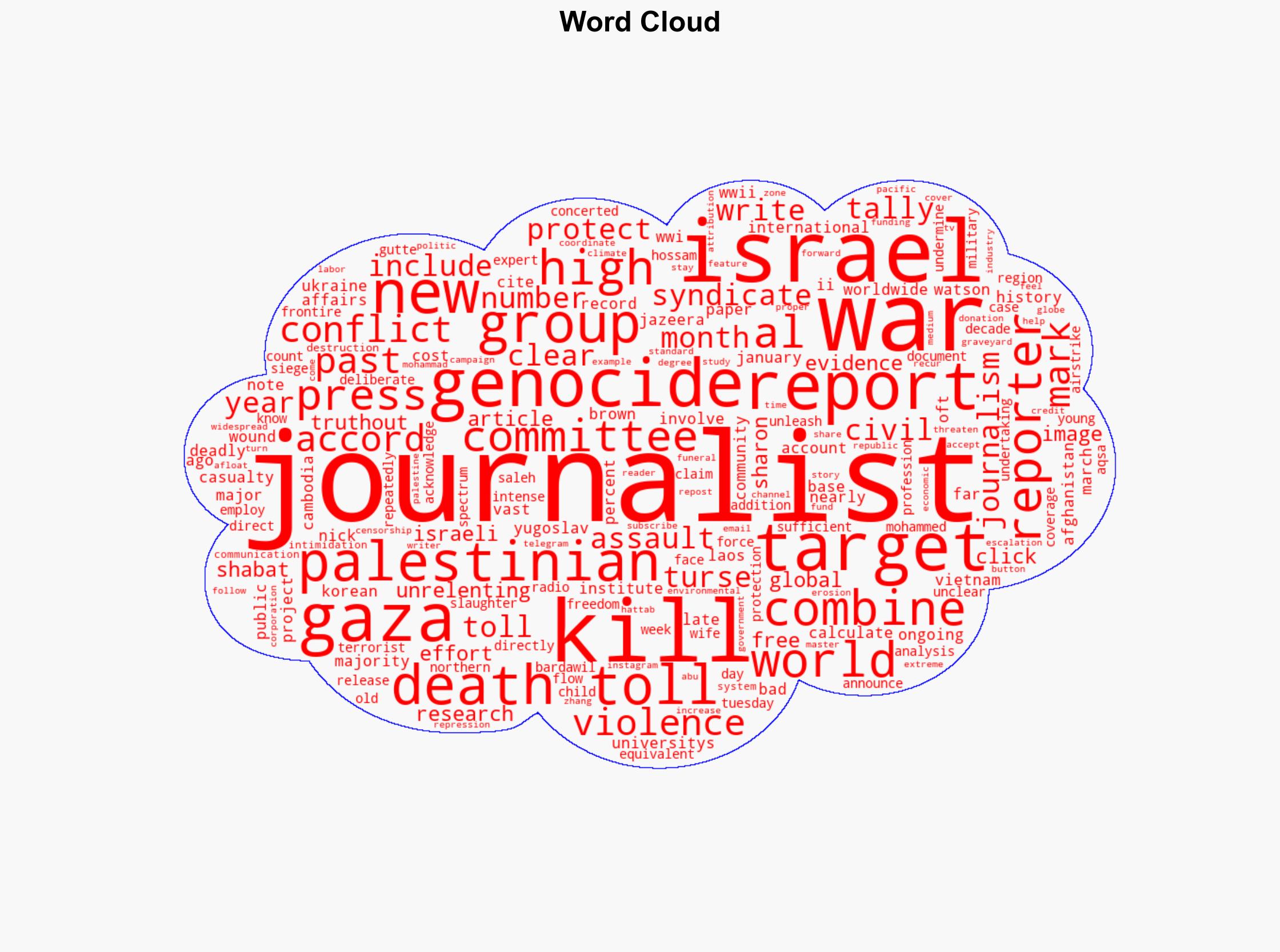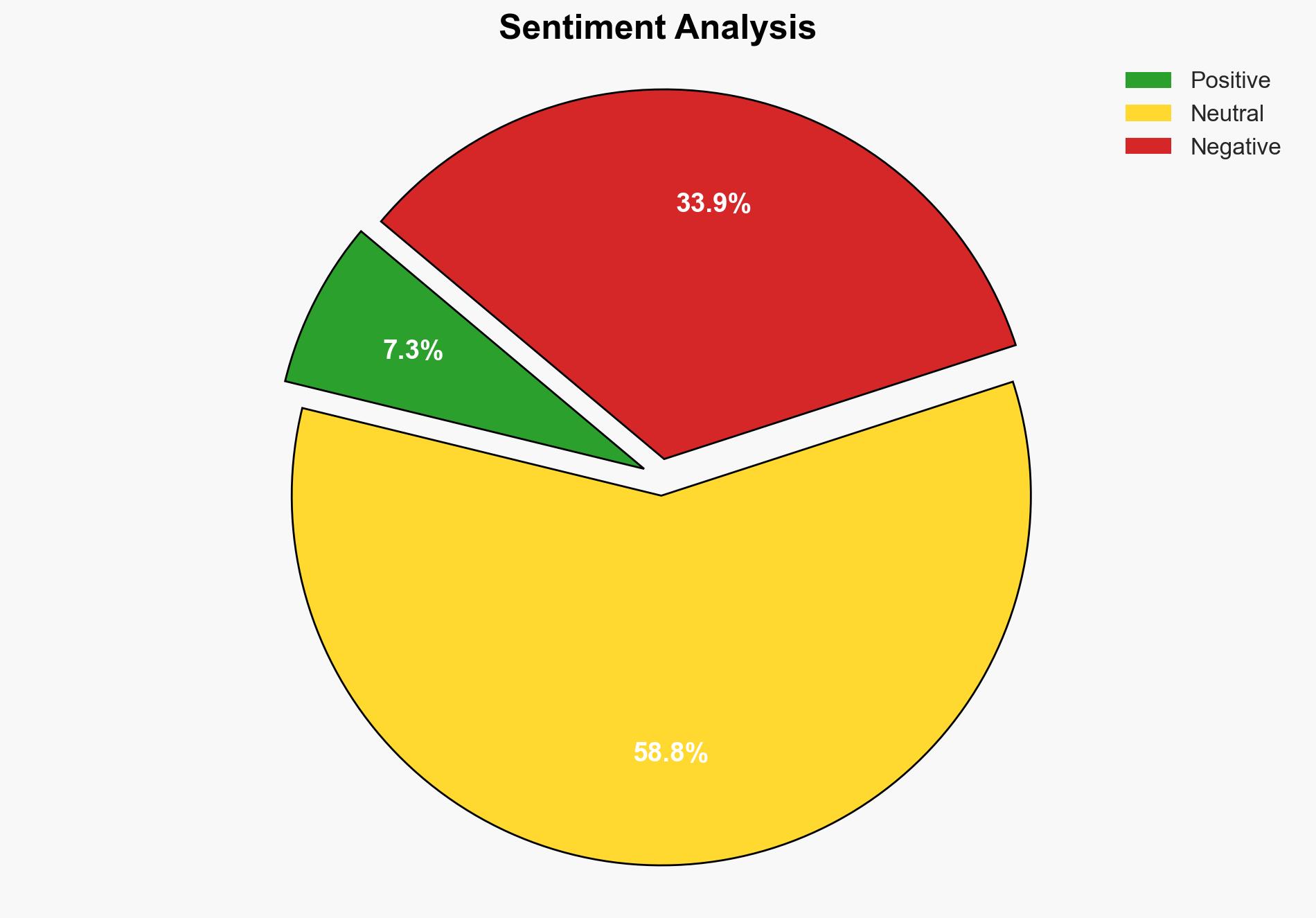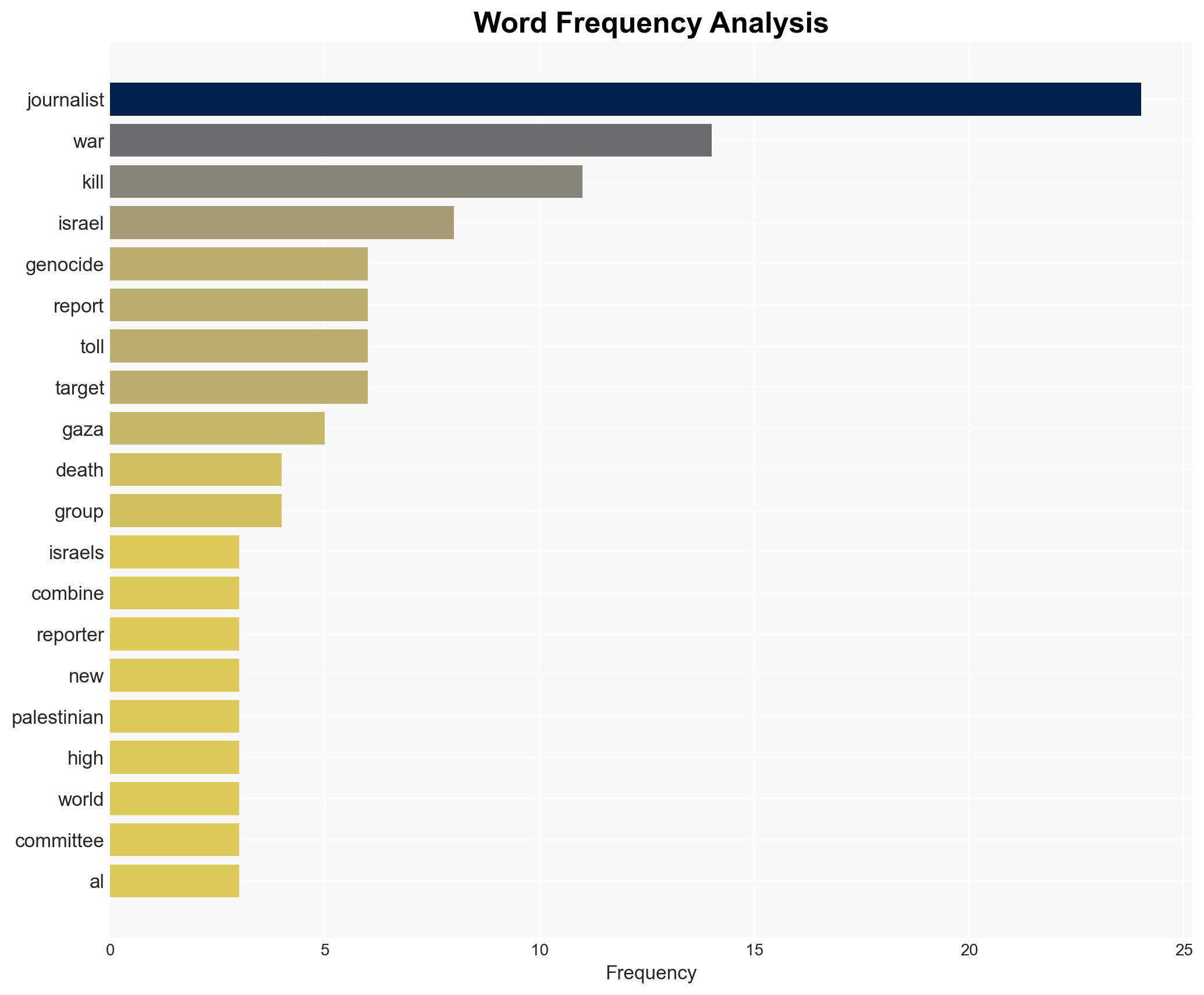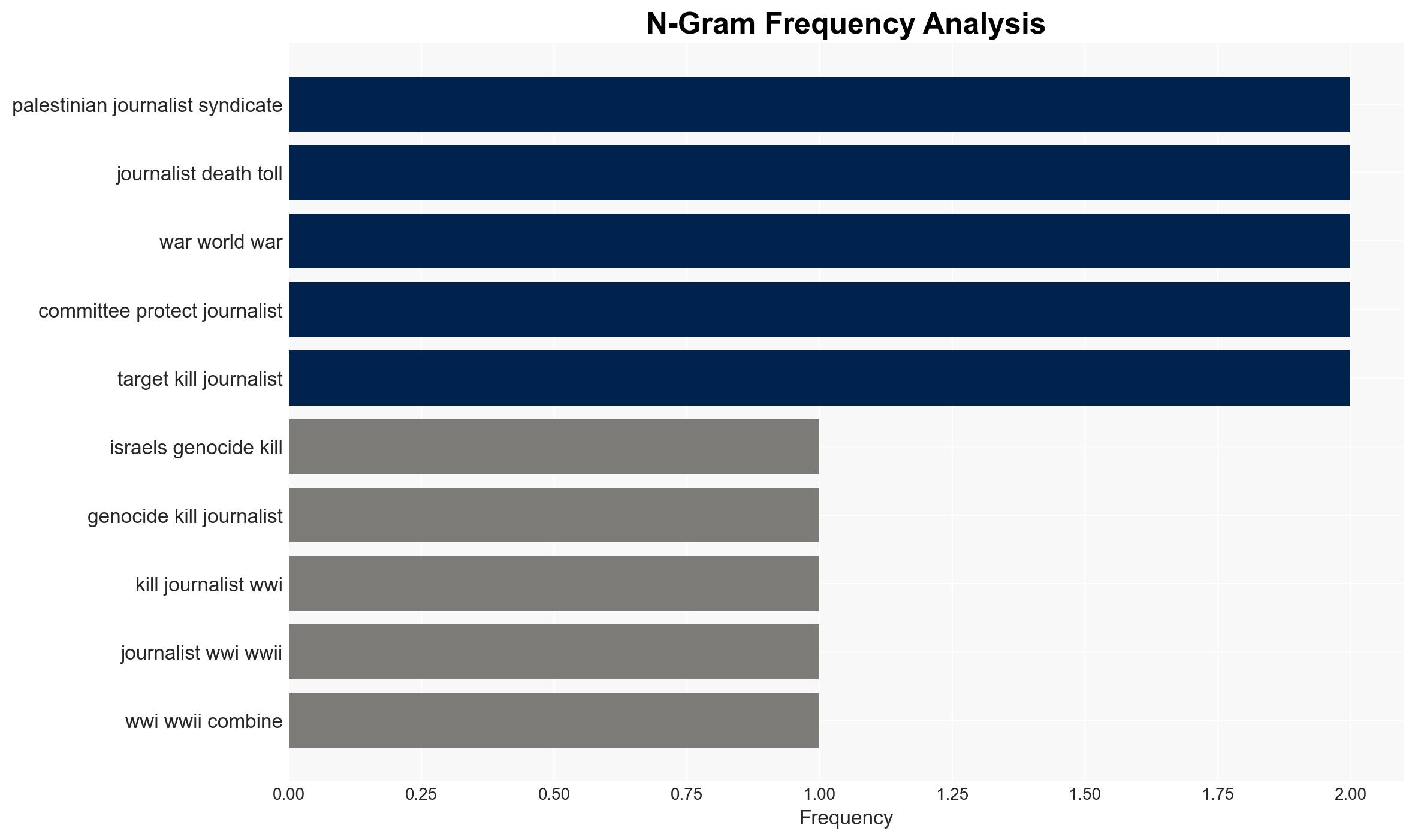Israels Genocide Has Killed More Journalists Than WWI and WWII Combined – Globalresearch.ca
Published on: 2025-04-03
Intelligence Report: Israels Genocide Has Killed More Journalists Than WWI and WWII Combined – Globalresearch.ca
1. BLUF (Bottom Line Up Front)
The report from Globalresearch.ca highlights an alarming increase in journalist casualties in Gaza, surpassing those in major historical conflicts such as WWI and WWII. The data, primarily sourced from the Palestinian Journalist Syndicate and corroborated by the Committee to Protect Journalists, indicates a deliberate targeting of media personnel. This trend poses significant threats to press freedom and regional stability. Immediate attention and intervention are recommended to address these violations and protect journalists in conflict zones.
2. Detailed Analysis
The following structured analytic techniques have been applied for this analysis:
General Analysis
The analysis reveals a systematic pattern of violence against journalists in Gaza, with a death toll surpassing that of major 20th-century conflicts. The report suggests that these actions are part of a broader strategy to suppress information flow and intimidate media personnel. The destruction of communication infrastructure and reports of direct targeting further substantiate these claims. The implications for global press freedom are severe, as this sets a dangerous precedent for the treatment of journalists in conflict zones.
3. Implications and Strategic Risks
The ongoing targeting of journalists in Gaza presents several strategic risks:
- National Security: The suppression of information can lead to misinformation and hinder international diplomatic efforts.
- Regional Stability: Increased violence against journalists may exacerbate tensions in the region, leading to further instability.
- Economic Interests: The erosion of press freedom can deter foreign investment and impact economic growth due to perceived instability.
4. Recommendations and Outlook
Recommendations:
- Implement international monitoring mechanisms to protect journalists in conflict zones.
- Encourage diplomatic efforts to address and resolve the underlying conflicts contributing to these incidents.
- Support technological advancements to ensure secure communication channels for journalists.
Outlook:
Best-case scenario: International intervention leads to a reduction in journalist casualties and improved press freedom in Gaza.
Worst-case scenario: Continued targeting results in further erosion of press freedom and increased regional instability.
Most likely outcome: Without significant intervention, the current trend of violence against journalists is likely to persist, with ongoing implications for regional and global stability.
5. Key Individuals and Entities
The report mentions several significant individuals and organizations:
- Nick Turse – Responsible for tallying journalist death tolls.
- Hossam Shabat – A journalist reportedly killed in an airstrike.
- Mohammed Saleh Al Bardawil – A journalist targeted and killed, as reported by the Palestinian Journalists Protection Committee.
- Sharon Zhang – News writer covering the situation.





